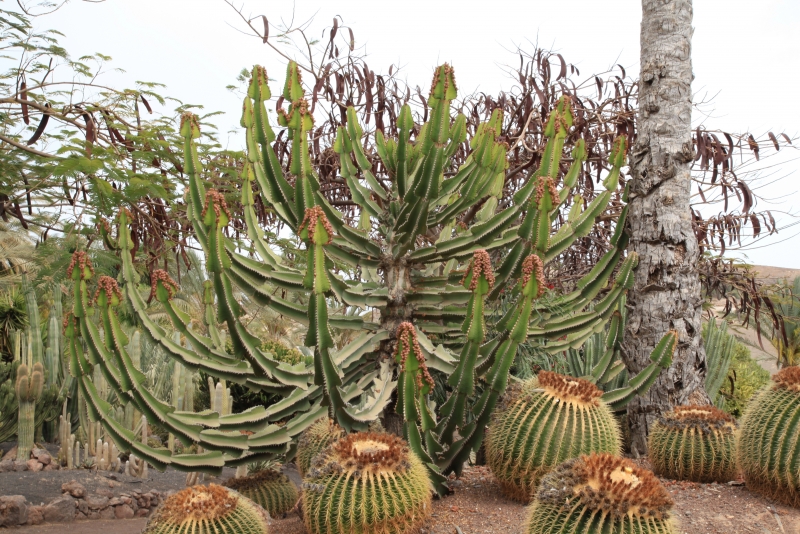


| height | 10–15ft | |
| width | 8–10ft | |
| tolerates | Deer , Gophers, Heat, Pots, Rooftops, Wind | |
| water needs |
Low – Moderate | |
| water info |
Columnar euphorbias are very drought tolerant but will grow faster if they receive some summer water, usually every couple weeks to a month once established (let the plant dry out between waterings). If you aren’t getting summer growth you may be underwatering. These plants prefer a dry winter; outdoors in central California, they won’t need supplemental winter water once established. | |
| hardy to |
32F | |
| exposure | Part Shade – Full Sun | |
| indoor outdoor |
Outdoor | |
| drainage | In Ground: Cactus Mix, In Pots: Cactus Mix | |
| fertilizing | All Purpose | |
| origin | South Africa, | |
| california native |
No | |
| sunset zones |
13, 21–24 |
Full Sun
Six or more hours of sun beams directly landing on the plant's leaves.
Part Shade
Three to five hours of sun beams directly landing on the plant's leaves.
Part Sun
One to two hours of sun beams directly landing on the plants leaves.
Full Shade
The plant is never fully lit by sun beams,
but is in a bright spot or has dappled sunbeams playing over the leaves throughout the day.
Deep Shade
The plant never has dappled light on the leaves, and is in a place that feels dim, even on a nice sunny day.
